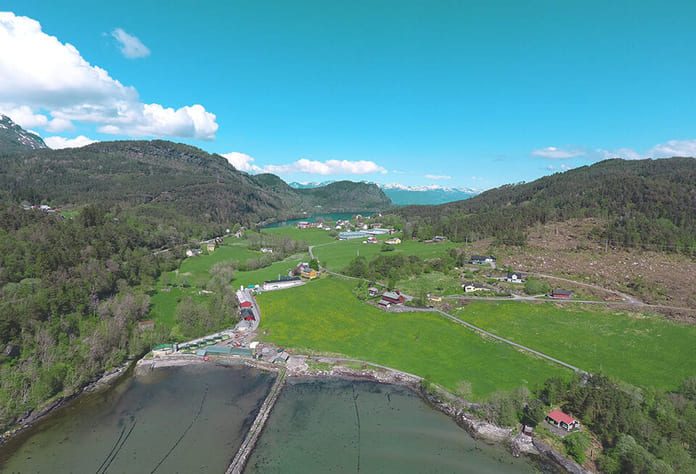Smolt farmer is heavily loaded with debt.
Last year was the greatest of all time. Operating profit doubled – from EUR 0.3 million to EUR 0.6 million. That came in handy. At year-end, Hardanger, Western Norway-based, BioFish had a book equity of EUR 2 million.
At the same time, the debt burden was EUR 12 million. This means a debt ratio in the balance sheet of 85 per-cent. Particularly demanding is a bond loan, of EUR 6 million, which runs at an 11 per-cent interest rate.
The small smolt farmer, which had a turnover of EUR 3 million in 2020, had a pre-money valuation EUR 13.6 million before the share issue. This corresponds to 20 times their peak earnings in 2020.
If price/book valuations are assessed, the smolt facility is valued at 6.6. In comparison, Mowi is priced at 3.5.
Repayment of debt
The plan is to raise between EUR 11 and 15 million based on this valuation. The money will primarily go towards repaying debts. Most of the work at the smolt facility soon be completed. Investments of EUR 3.5 million remain to complete the work for the site, which can produce 2,200 tonnes.
Why should such a small company go on the stock exchange? Can’t you go through a bank or in the unregulated market?
“Getting bank financing hasn’t been that easy, but we’ve tried it,” chairman Morten Harsvik told SalmonBusiness.
“But now we’ve made it work. Now we’ve got a bank on board. It would have been easier to get bank financing if we had a fish farmer who had a controlling stake in the company,” said Harsvik.
“But the stock exchange has proved very effective,” he added.
Conditional
The bank financing, of EUR 6 million from Collector Bank, is contingent on bringing in at least EUR 10 million in new equity. In other words, most of the share issue proceeds will go towards debt repayments.
“That’s right – plus we will finish the facility that is almost finished,” said Harsvik.
Is it right that you say that you are going public to refinance the company?
“No, it is not. The right thing is that we go on the stock exchange to realize the potential of the facility, complete the facility we have and take out the potential further. We have the potential for harvest ready fish on the same plot. We can get a total production of 10,000 tonnes, including the 2,200 tonnes we are now completing,” he said.
But then you have to raise significantly more money?
“That’s exactly right. It’s step three. Now we’re setting step two and facilitating stage three. Among other things, we have some regulatory steps that need to be implemented,” he added.
You are guiding a future EBIT (not specified) between EUR 7 and 9 million. Is it based on 10,000 tonnes?
“No, it is based on the operation we have, but I think Torbjørn [Skulstad, CEO .ed] should comment on this,” he said.
Okay, then EUR 7 to 9 million in EBIT of 2,200 tonnes of salmon? Is that realistic?
“We see it in the production costs we have now, but I’ll have Torbjørn call you,” added Harsvik.
According to Torbjørn Skulstad, the EBIT estimate is realistic.
“Yes, in relation to what we have produced, the people we have, the capacity we have, we think it is a realistic estimate. And you see that in fish farms in the sea as well. Remember that this is post-smolt, not ordinary smolt. There are larger smolt produced,” said Skulstad.
The ongoing dispute with Russian Salmon – is it the same as the predecessor Green Salar had?
“The dispute that Green Salar had with Russian Salmon has been solved, they both went bankrupt. Russian Salmon has reemerged in Russia, and then we had an agreement with them where on the last delivery they did not pick up the fish,” explained Harsvik.
According to the prospectus, the loss provision is EUR 0.2 million.
“It’s not a big deal,” he added.
BioFish Holding is owned by brothers Ole Fredrik and Torbjørn Skulstad (50 per-cent) and Morten Harsvik (50 per-cent).

